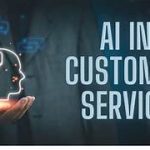The Impact of AI on Education and Learning
Artificial intelligence (AI) is revolutionizing various sectors, and education is no exception. With advancements in machine learning, natural language processing, and data analytics, AI is reshaping how knowledge is delivered, acquired, and managed. This article explores the transformative effects of AI on education and learning, highlighting its benefits, challenges, and future prospects.
Personalized Learning
One of the most significant impacts of AI in education is the facilitation of personalized learning. Traditional teaching methods often follow a one-size-fits-all approach, which may not cater to individual students’ needs. AI-powered tools, such as adaptive learning platforms, analyze students’ strengths, weaknesses, and learning styles to provide tailored educational experiences.
For example, platforms like DreamBox and Khan Academy use AI algorithms to adjust the difficulty level of exercises based on a student’s performance. This approach ensures that learners receive content suited to their pace and ability, thereby enhancing comprehension and retention.
Intelligent Tutoring Systems
AI-driven intelligent tutoring systems (ITS) offer one-on-one assistance to students, simulating the role of a personal tutor. These systems use machine learning to understand a student’s learning behavior and provide customized feedback and support. Tools like Carnegie Learning and Squirrel AI have demonstrated their ability to improve academic performance by addressing individual learning gaps.
Moreover, ITS can operate 24/7, providing round-the-clock support to students and fostering a self-directed learning environment. This accessibility is particularly beneficial for learners in remote areas or those with limited access to traditional educational resources.
Enhanced Administrative Efficiency
AI is also streamlining administrative tasks, allowing educators to focus more on teaching and mentoring. Tasks such as grading, attendance tracking, and scheduling can be automated using AI-powered systems. For instance, tools like Gradescope use AI to grade assignments and exams efficiently, reducing the workload for teachers.
Additionally, AI systems can analyze large datasets to identify trends and insights, aiding school administrators in decision-making. Predictive analytics can forecast student performance, enabling early interventions for at-risk students.
Virtual and Augmented Reality in Education
The integration of AI with virtual and augmented reality (VR/AR) technologies is creating immersive learning experiences. AI enhances these technologies by adapting content in real-time based on user interactions. For instance, AI-driven VR simulations allow medical students to practice surgeries in a risk-free environment, while AR applications provide interactive experiences in subjects like history and geography.
These technologies not only make learning engaging but also help students grasp complex concepts through experiential learning.
Language Learning and Accessibility
AI-powered language learning applications, such as Duolingo and Babbel, have transformed the way languages are taught and learned. These platforms leverage AI to provide personalized lessons, real-time feedback, and gamified experiences to keep learners motivated.
Furthermore, AI is improving accessibility in education for students with disabilities. Speech-to-text tools, screen readers, and AI-powered sign language translators are breaking barriers for visually or hearing-impaired learners, ensuring inclusivity in education.
Data-Driven Insights
AI’s ability to process and analyze vast amounts of data is enabling educators to gain deeper insights into student performance and behavior. Learning management systems (LMS) equipped with AI can track students’ progress, identify areas of improvement, and recommend resources to address specific challenges.
For example, AI analytics can reveal patterns such as declining engagement levels or frequent errors in specific topics. Educators can use these insights to adapt their teaching strategies and provide targeted support to students.
Ethical Considerations and Challenges
Despite its potential, the integration of AI in education comes with challenges and ethical concerns. Data privacy is a major issue, as AI systems often require access to sensitive student information. Ensuring compliance with data protection regulations, such as GDPR and FERPA, is crucial to safeguard privacy.
Bias in AI algorithms is another concern. If not properly addressed, these biases can lead to unfair treatment of certain groups of students. For instance, AI systems trained on biased datasets may inadvertently favor or disadvantage specific demographics.
Additionally, the over-reliance on AI could diminish the role of human educators. While AI can enhance learning experiences, it cannot replace the empathy, creativity, and critical thinking that teachers bring to the classroom. Striking a balance between AI and human involvement is essential.
Future Prospects
The future of AI in education is promising, with advancements likely to address current limitations and unlock new possibilities. Here are some potential developments:
- Lifelong Learning: AI will play a key role in fostering lifelong learning by providing personalized content and skill-building opportunities for individuals at different stages of their lives.
- Global Collaboration: AI-powered platforms can connect learners and educators worldwide, promoting cross-cultural exchange and collaboration.
- Emotional AI: Future AI systems may incorporate emotional intelligence to better understand and respond to students’ emotions, creating a supportive and empathetic learning environment.
- Gamification: AI will continue to enhance gamified learning experiences, making education more engaging and effective.
- Hybrid Classrooms: The integration of AI with traditional teaching methods will lead to hybrid classrooms that combine the best of both worlds, ensuring a comprehensive learning experience.
Conclusion
Artificial intelligence is transforming education and learning in unprecedented ways. By enabling personalized learning, enhancing accessibility, and streamlining administrative tasks, AI is creating a more efficient and inclusive educational landscape. However, addressing ethical concerns and ensuring the responsible use of AI is crucial to maximize its benefits.
As technology continues to evolve, the collaboration between educators, policymakers, and technologists will be essential to harness AI’s potential for the betterment of education. The ultimate goal is to create a learning environment that is not only innovative but also equitable and empowering for all learners.


